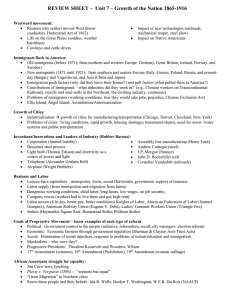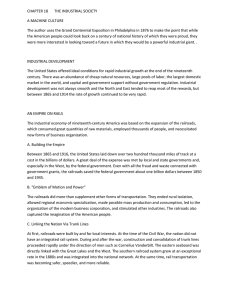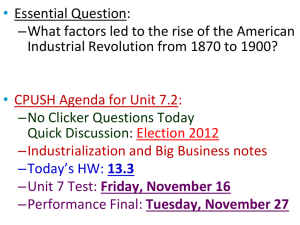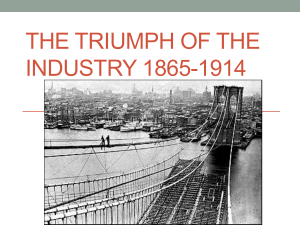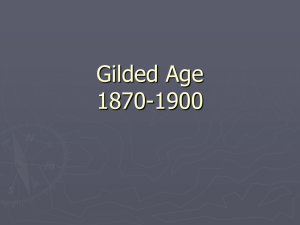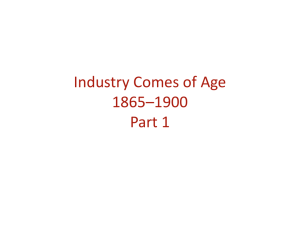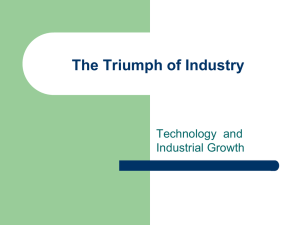Gilded Age: Industrialization, Urbanization, Immigration
advertisement
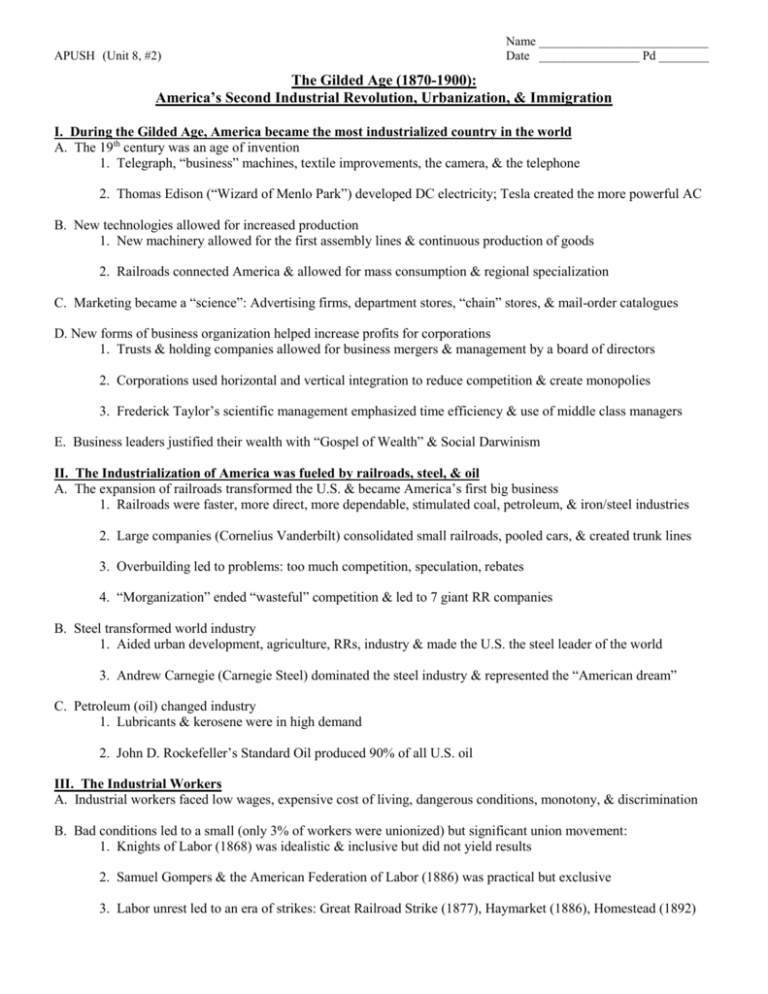
APUSH (Unit 8, #2) Name ___________________________ Date ________________ Pd ________ The Gilded Age (1870-1900): America’s Second Industrial Revolution, Urbanization, & Immigration I. During the Gilded Age, America became the most industrialized country in the world A. The 19th century was an age of invention 1. Telegraph, “business” machines, textile improvements, the camera, & the telephone 2. Thomas Edison (“Wizard of Menlo Park”) developed DC electricity; Tesla created the more powerful AC B. New technologies allowed for increased production 1. New machinery allowed for the first assembly lines & continuous production of goods 2. Railroads connected America & allowed for mass consumption & regional specialization C. Marketing became a “science”: Advertising firms, department stores, “chain” stores, & mail-order catalogues D. New forms of business organization helped increase profits for corporations 1. Trusts & holding companies allowed for business mergers & management by a board of directors 2. Corporations used horizontal and vertical integration to reduce competition & create monopolies 3. Frederick Taylor’s scientific management emphasized time efficiency & use of middle class managers E. Business leaders justified their wealth with “Gospel of Wealth” & Social Darwinism II. The Industrialization of America was fueled by railroads, steel, & oil A. The expansion of railroads transformed the U.S. & became America’s first big business 1. Railroads were faster, more direct, more dependable, stimulated coal, petroleum, & iron/steel industries 2. Large companies (Cornelius Vanderbilt) consolidated small railroads, pooled cars, & created trunk lines 3. Overbuilding led to problems: too much competition, speculation, rebates 4. “Morganization” ended “wasteful” competition & led to 7 giant RR companies B. Steel transformed world industry 1. Aided urban development, agriculture, RRs, industry & made the U.S. the steel leader of the world 3. Andrew Carnegie (Carnegie Steel) dominated the steel industry & represented the “American dream” C. Petroleum (oil) changed industry 1. Lubricants & kerosene were in high demand 2. John D. Rockefeller’s Standard Oil produced 90% of all U.S. oil III. The Industrial Workers A. Industrial workers faced low wages, expensive cost of living, dangerous conditions, monotony, & discrimination B. Bad conditions led to a small (only 3% of workers were unionized) but significant union movement: 1. Knights of Labor (1868) was idealistic & inclusive but did not yield results 2. Samuel Gompers & the American Federation of Labor (1886) was practical but exclusive 3. Labor unrest led to an era of strikes: Great Railroad Strike (1877), Haymarket (1886), Homestead (1892) IV. Urbanization A. American cities grew due to new immigrants, blacks, & rural migrants seeking economic opportunities 1. Steel allowed for skyscrapers & the Chicago Fire of 1871 allowed Root & Sullivan to redesign the city 2. Gilded Age cities developed central business districts with middle class suburbs, streetcars, & rapid transit B. “Dumbbell” tenement housing for the urban poor was unhealthy & dangerous C. From 1880 to 1920, 23 million “new” immigrants came to America 2. “New” immigrants were from eastern and southern Europe 3. Immigrants maintained their culture & eastern cities experienced a resurgence in nativism D. Urban political machines like Tammany Hall and the Boss Tweed Ring used corruption & “honest graft” E. Urbanization & industrialization changed American society 1. Self-sufficient female workers decreased family time & led to fewer children 2. New education laws, kindergartens, & public & private universities were formed 3. New amusements were introduced: public parks, vaudeville amusement, & sporting events like baseball V. Conclusions
